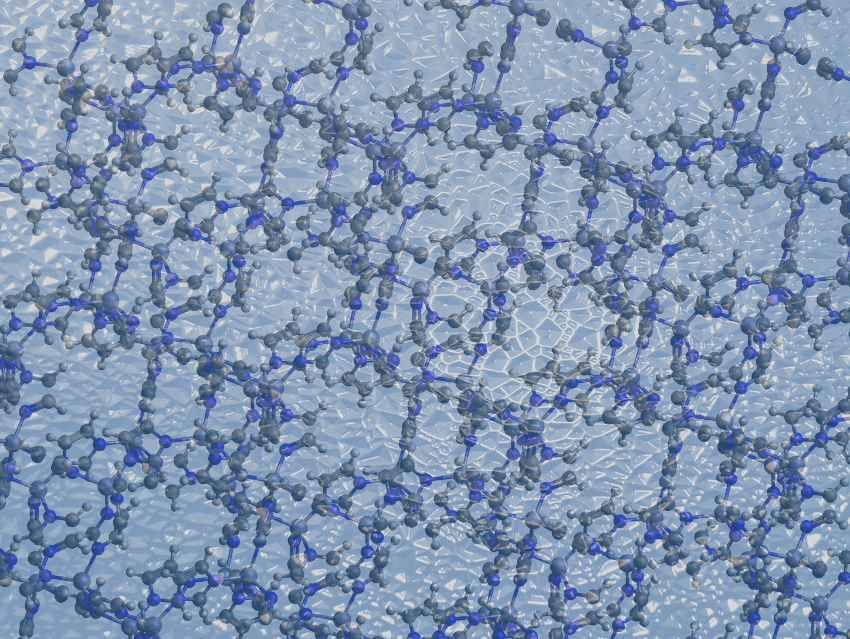Metal–organic frameworks (MOFs) are composed of metal centers and organic linkers. Usually, MOFs are crystalline, porous materials. They are useful, e.g., in catalysis or gas separation. However, MOFs can have problems when it comes to their processability, as well as their mechanical and chemical stability. MOF-containing composites can solve these problems while retaining the useful properties of the frameworks.
In addition to its “normal”, crystalline form, the Zn-based MOF ZIF-62 can also exist in a glassy form (agZIF-62). This form can be obtained by quenching the molten MOF. It can be used to make MOF crystal–glass composites (MOF CGCs), in which crystalline MOFs are embedded in a matrix of glassy agZIF-62. However, this usually involves heating mixtures of the target MOF and ZIF-62 to 450 °C, above the melting point of ZIF-62. This high temperature can lead to degradation of the embedded MOF.
Thomas D. Bennett, University of Cambridge, UK, and colleagues have developed a lower-temperature method for the synthesis of MOF CGCs. The team used preformed agZIF-62 to embed two different crystalline MOFs: ZIF-67, a Co-based MOF, and UiO-66, a Zr-based MOF. They annealed mixtures of agZIF-62 and the respective crystalline MOF at 400 °C under argon to obtain the desired MOF crystal–glass composites. This temperature lies above the glass transition temperature of ZIF-62 (318 °C), but below its melting point. According to the researchers, this lower processing temperature could allow the synthesis of further new MOF CGCs.
- A new route to porous metal–organic framework crystal–glass composites,
Shichun Li, Shuwen Yu, Sean M. Collins, Duncan N. Johnstone, Christopher W. Ashling, Adam F. Sapnik, Philip A. Chater, Dean S. Keeble, Lauren N. McHugh, Paul A. Midgley, David. A. Keen, Thomas D. Bennett,
Chem. Sci. 2020.
https://doi.org/10.1039/d0sc04008h



